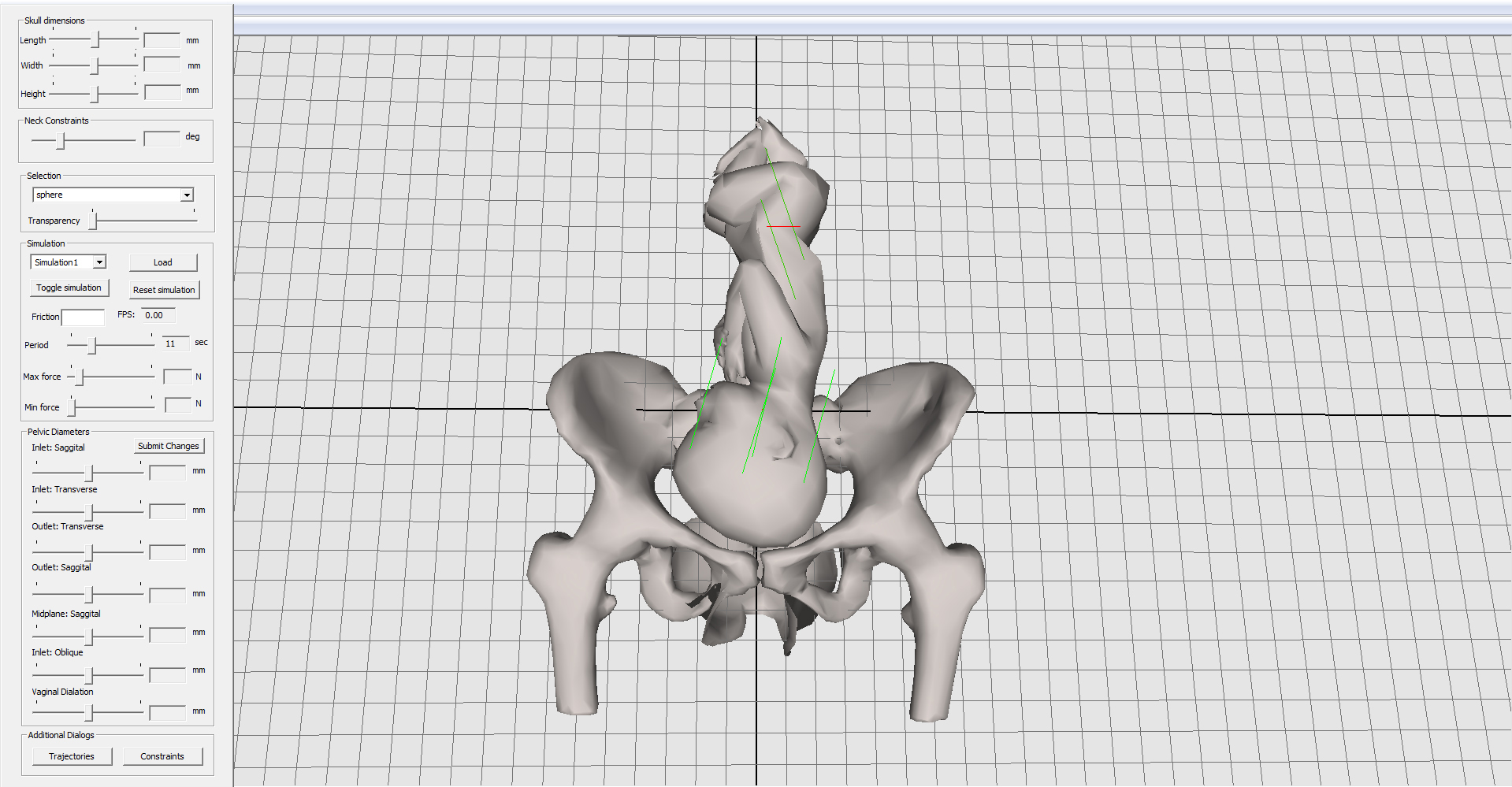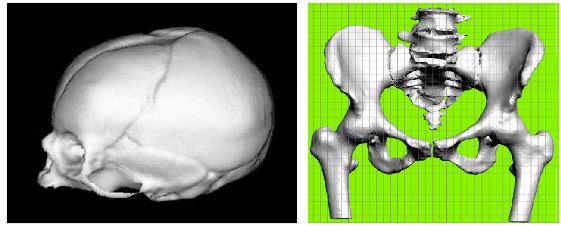A patient-specific 3D virtual birth simulator
November 26, 2013

User interface of the current version of the childbirth simulator (credit: University of East Anglia)
The new program will take into account factors such as the shape of the mother’s body and the positioning of the baby to provide patient-specific birth predictions.
“We are creating a … simulation of childbirth using 3D graphics to simulate the sequence of movements as a baby descends through the pelvis during labor,” said Dr. Rudy Lapeer from UEA’s school of Computing Sciences, who is leading the project.
“Users will be able to input key anatomical data — such as the size and shape of the mother’s pelvis, and the baby’s head and torso. By doing this you will be able to set different bespoke [custom] scenarios for both the mother and baby.”
[+]
Ultrasound data is used to re-create a geometric model of a baby’s
skull and body in 3D graphics as well as the mother’s body and pelvis.
Geometric models of a fetal skull and maternal pelvis (credit: University of East Anglia)
Programmers are also taking into account the force from the mother pushing during labor and are modeling a virtual midwife’s hands interacting with the baby’s head.
“Because this program is patient-specific, doctors and midwives will be able to see how a birth may take place before it has happened on a case-by-case basis. For example, you would be able to see if a baby’s shoulders will get stuck.
“We hope that this could help to avoid complicated births altogether by guiding people in the medical profession to advise on caesarean sections where necessary.”
Abstract of IEEE International Conference on E-Health and Bioengineering paper
The paper presents initial experiments on a basic forward engineered childbirth simulator. Polygonal models of a fetal skull and bony maternal pelvis were created. A simple physics model was implemented to model the mechanical contact interaction between the fetal head and the maternal pelvis. A series of experiments were run to establish whether this basic model would display the cardinal movements which are observed during normal labour. Though the first three movements were observed without needing reverse engineered action, the subsequent cardinal movements required the use of waypoints along the trajectory of the birth canal. It was concluded that more complex geometry, including a fully articulated fetus and the inclusion of soft tissue would be required to arrive at a realistic fully functional forward engineered human childbirth simulator.
(¯`*• Global Source and/or more resources at http://goo.gl/zvSV7 │ www.Future-Observatory.blogspot.com and on LinkeIn Group's "Becoming Aware of the Futures" at http://goo.gl/8qKBbK │ @SciCzar │ Point of Contact: www.linkedin.com/in/AndresAgostini
 Washington
Washington